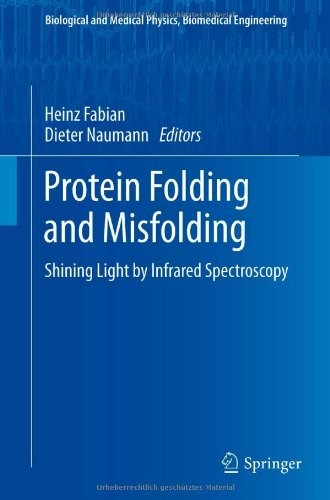

Most ebook files are in PDF format, so you can easily read them using various software such as Foxit Reader or directly on the Google Chrome browser.
Some ebook files are released by publishers in other formats such as .awz, .mobi, .epub, .fb2, etc. You may need to install specific software to read these formats on mobile/PC, such as Calibre.
Please read the tutorial at this link: https://ebookbell.com/faq
We offer FREE conversion to the popular formats you request; however, this may take some time. Therefore, right after payment, please email us, and we will try to provide the service as quickly as possible.
For some exceptional file formats or broken links (if any), please refrain from opening any disputes. Instead, email us first, and we will try to assist within a maximum of 6 hours.
EbookBell Team

4.3
8 reviewsInfrared spectroscopy is a new and innovative technology to study protein folding/misfolding events in the broad arsenal of techniques conventionally used in this field. The progress in understanding protein folding and misfolding is primarily due to the development of biophysical methods which permit to probe conformational changes with high kinetic and structural resolution. The most commonly used approaches rely on rapid mixing methods to initiate the folding event via a sudden change in solvent conditions. Traditionally, techniques such as fluorescence, circular dichroism or visible absorption are applied to probe the process. In contrast to these techniques, infrared spectroscopy came into play only very recently, and the progress made in this field up to date which now permits to probe folding events over the time scale from picoseconds to minutes has not yet been discussed in a book. The aim of this book is to provide an overview of the developments as seen by some of the main contributors to the field. The chapters are not intended to give exhaustive reviews of the literature but, instead to illustrate examples demonstrating the sort of information, which infrared techniques can provide and how this information can be extracted from the experimental data. By discussing the strengths and limitations of the infrared approaches for the investigation of folding and misfolding mechanisms this book helps the reader to evaluate whether a particular system is appropriate for studies by infrared spectroscopy and which specific advantages the techniques offer to solve specific problems.